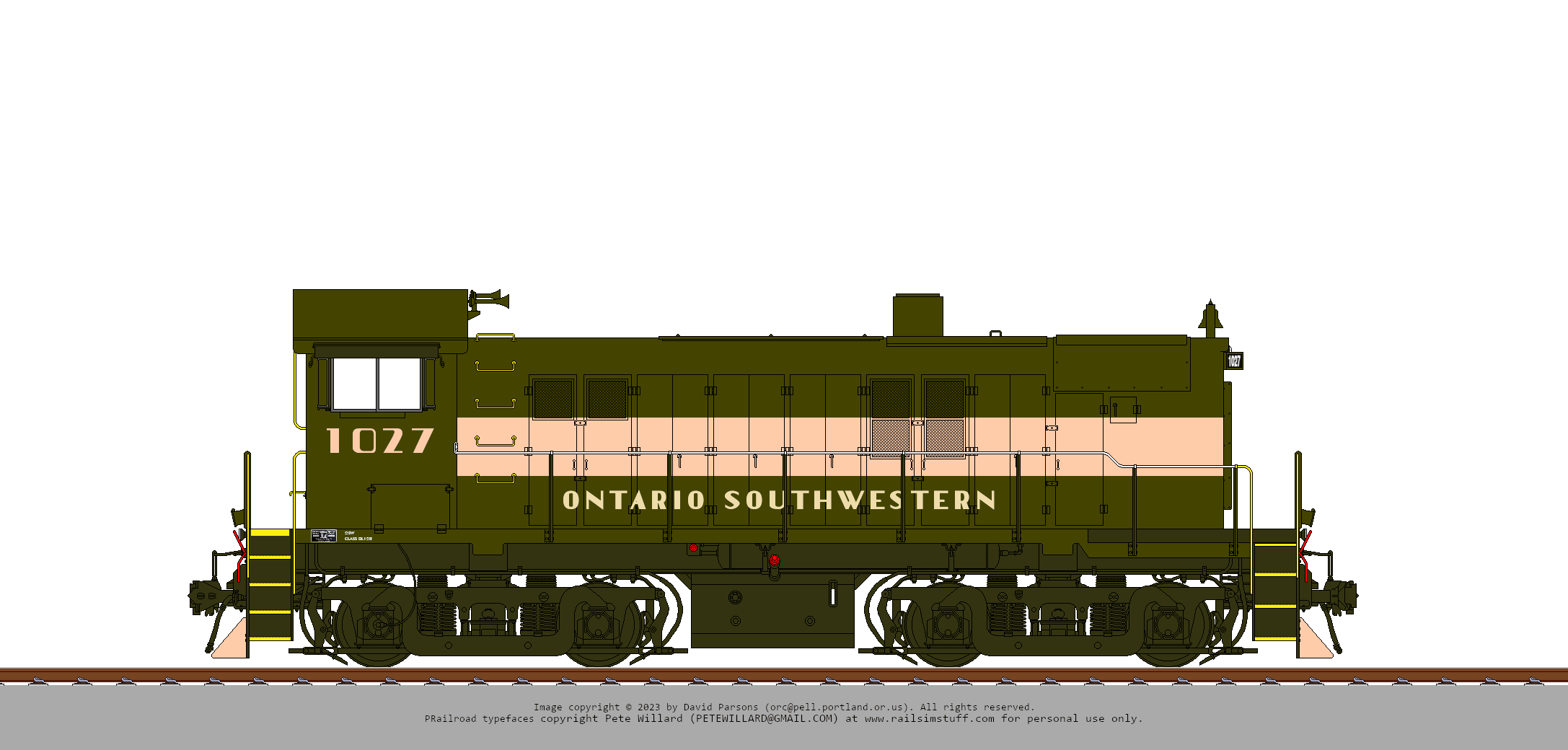In 1986, CP sold the Guelph and Goderich Railway to a group of local investors who thought that they could develop Goderich’s port so that it wasn’t just originating salt. The railroad was soon filled out by adding a line between Guelph & Owen Sound and then, in 1992, a branch to Stratford (on the CN’s line to Goderich, which was in the process of being abandoned.)
Developing the port of Goderich never actually panned out (any sort of bulk reload facility would cost serious money with no guarantee of attracting traffic, and none of the shippers who used the lake were willing to commit to landing at the port without having facilities in place) but the railroad managed to retain enough salt traffic and carload freight from the branches to stay healthy.
Meanwhile, further to the southwest, another group of investors managed to grab most of Conrail’s Canada Southern Railway when Conrail let it be known it was for sale or abandonment (most of because CN & CP were veeeery interested in the Michigan Central’s Detroit River tunnel and the bridge over the Niagara River between the two cities of Niagara Falls; These investors were primarily interested in the CASO mainline between Windsor & Fort Erie, so giving up the tunnel & the Niagara Falls branch was easy to do.)
CASO had been pretty thoroughly run down under Conrail’s watch, but it still made a third bridge line between Buffalo & Detroit. There was very little traffic on the line (and the handful of branches that had not already been closed) but a fairly dedicated marketing crew managed to preserve what little was left plus bring back a few big shippers, which made the line more than a little profitable.
In 1990, CN wanted to get rid of the remaining lines of the Niagara, St Catharines & Toronto, and the investors put down enough money to purchase them en masse to increase the traffic base of the railroad, and in 1995 Canada Southern (a) bought the Guelph & Goderich, then merged with the Ontario Radial Railway Company, which had just completed buying – and re-electifying! – the Lake Erie & Northern, which gave a connection between the CASO & the G&G instead of trackage rights on CN & CP (both of which were beginning to think that letting CASO go in return for the Detroit River tunnel was maybe not the best idea.
At this point the railway was renamed to the Ontario Southwestern, because it was no longer just a bridge line in the south.
OSW settled down to a comfortable existance, but 11 years after the merger one of the corporate backed investors bought out the rest and then revealed – by announcing a merger – that they were backed by the LT&L up in Québec, and so in 2007 the OSW stopped existing as an independent railway and became the LT&L’s Ontario subsidiary, connected to the rest of the Parsons Vale system by the Delaware & Hudson via a circuitous route through southern New York.
in the early 2010s, the OSW and parents LT&L and the Delaware & Hudson Railway announced their China Tunnel Railway project to put a second tunnel under the St Clair River at Courtright – connecting to the recently purchased ex-GTW secondary between Richmond & Jackson, MI – and electrifying this new line & the eastern two thirds of the CASO mainline.
The CTRC project operated its first revenue train under the St Clair at the end of 2023, so on the second of January 2024 the OSW embargoed, then filed for abandonment of their ex-CASO route west of Comber (spinning off the St Thomas-Comber mainline, the Leamington branch, and the newly-acquired ex-CSX branch to Blenheim, as the Leamington & Saint Thomas Railway.)
The OSW (and the component radials of the ORRC) still maintain distinct identities because the Parsons Vale had decided that it helped preserve local connections if the components of the system weren’t so obviously part of a distant faceless charitable trust (at least that’s the excuse; the TdM’s aggressive defence of their pre-merger identity had worn down the central office to the point where they started to appreciate that their engine servicing facilities weren’t an endless sea of blue and white.)
